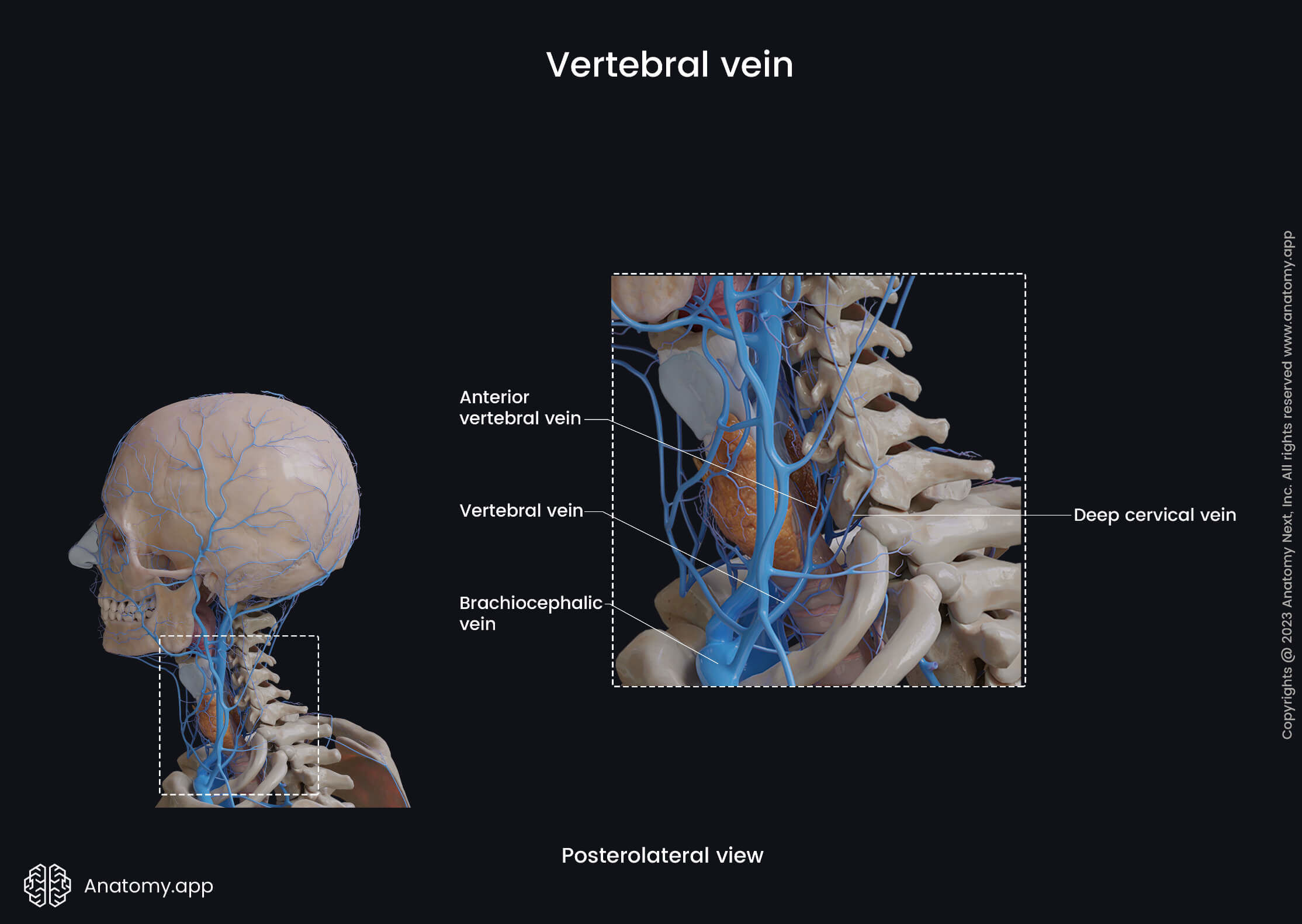- Anatomical terminology
- Skeletal system
- Joints
- Muscles
- Heart
- Blood vessels
- Blood vessels of systemic circulation
- Aorta
- Blood vessels of head and neck
- Arteries of head and neck
- Veins of head and neck
- Blood vessels of upper limb
- Blood vessels of thorax
- Blood vessels of abdomen
- Blood vessels of pelvis and lower limb
- Blood vessels of systemic circulation
- Lymphatic system
- Nervous system
- Respiratory system
- Digestive system
- Urinary system
- Female reproductive system
- Male reproductive system
- Endocrine glands
- Eye
- Ear
Vertebral vein
The vertebral vein (Latin: vena vertebralis) is a venous blood vessel that is formed by numerous small tributaries arising from the internal vertebral plexuses. The vertebral vein collects venous blood mainly from the upper deep muscles of the back.
The vertebral vein arises from the external venous plexus at the level of the posterior arch of the atlas (C1). The vein accompanies the vertebral artery, forming a plexus around it. Further, the vertebral vein passes downward through the transverse foramina of the 1st to 7th cervical vertebrae (C1 - C7) and drains into the brachiocephalic vein. On its course, the vertebral vein receives several tributaries, including:
- Occipital vein
- Internal vertebral plexus
- External vertebral plexus
- Veins of prevertebral muscles
